ACUFO-1945-02-13-BISCHWILLER-1
In 1944-1945, crews of the 415th Night Fighter Squadron of the U.S. Army Air Forces had repeatedly reported strange lights in the night sky during their missions in the Rhine valley combat zone. They were called “Foo-Fighters” by the crews.
In a combat diary, it appears that one of the 415th NFS members reported a sighting on February 13, 1945, about 07:10 p.m., between Rastatt and Bischwiller.
He encountered two sets of lights at 3000 feet, he turned into them, one went out and the other went straight up 2 000 to 3 000 feet, then went out.
He turned back to base, looked back and saw that the lights were in their original position again.
| Date: | February 13, 1945 |
|---|---|
| Time: | 07:10 p.m. |
| Duration: | ? |
| First known report date: | February 1945 |
| Reporting delay: | Hours, days. |
| Country: | Germany or France |
|---|---|
| State/Department: | Baden-Wurtemberg or Bas-Rhin |
| City or place: | Rastatt, Bischwiller |
| Number of alleged witnesses: | 1 or 2. |
|---|---|
| Number of known witnesses: | 1 |
| Number of named witnesses: | 0 |
| Reporting channel: | Military operations report. |
|---|---|
| Visibility conditions: | Night. |
| UFO observed: | Yes. |
| UFO arrival observed: | ? |
| UFO departure observed: | Yes. |
| UFO action: | Turned off, other flew upwards. |
| Witnesses action: | Directs plane to UFOs. |
| Photographs: | No. |
| Sketch(s) by witness(es): | No. |
| Sketch(es) approved by witness(es): | No. |
| Witness(es) feelings: | Puzzled. |
| Witnesses interpretation: | ? |
| Sensors: |
[X] Visual: 1 or 2.
[ ] Airborne radar: ? [ ] Directional ground radar: ? [ ] Height finder ground radar: [ ] Photo: [ ] Film/video: [ ] EM Effects: [ ] Failures: [ ] Damages: |
|---|---|
| Hynek: | NL |
| Armed / unarmed: | Armed, machine guns and 20 mm cannons. |
| Reliability 1-3: | 3 |
| Strangeness 1-3: | 2 |
| ACUFO: | Unidentified. |
[Ref. jce1:] UFOLOGY BULLETIN "JUST CAUSE":
The Citizens Against UFO Secrecy (CAUS) newsletter reported that on September 3, 1992, their editor Barry Greenwood searched the National Archives in Suitland, Maryland, USA, to find more documents on the Foo-Fighters emanating from of the 415th Night Fighter Squadron, and had found some, mainly “Mission Reports”. Barry Greenwood reported:
[...]
Archives personnel provided a large cardboard box holding three feet of file folders of the 415th NFS and affiliated bomber groups. The period covered was late September 1944 - April 1945. It was obvious that I would spend at least a full day scanning this bunch. The records were not in the best condition, a fact which should be of great concern to those interested in the contents of old files, not just on this but on any subject. Many of the papers were onion-skin copies, very fragile and yellowing. Other reports were on coarse, brown paper which was very brittle, flakes of which were coming off on my hands. It was no longer surprising why quite often when CAUS would request and receive government files the copies were difficult, and sometimes impossible, to read. We are in a race against time as many government records are literally self-destructing on the shelf. With the millions of copies for which the National Archives is responsible, there is simply not enough staff or resources to take care of it all.
What also became clear is that the staff of the National Archives are not absolute authorities on the records that we have obtained regarding UFOs. The response I had to a request for help in locating a particular Air Force document with an identifying number was, “Good luck, we don't know.” Not that they were being fresh but that the Air Force had lost the inventory to that group of documents. I had a new appreciation for the time delays in responding to FOIA requests as well. It took me the best part of a day just to scan one box thoroughly. I was in a room with about thirty to forty people, all of whom had their own agenda and own piles of paper to scan. Factor in mail requests and the demands on the staff must be terrific. I heard a complaint by one of having to pull hundreds of boxes himself to fulfill researchers' requests just for that day.
The 415th's mission reports tended to be brief in their descriptions of everything. There were reports of aircraft destroyed, buildings bombed, flak, vehicles destroyed; etc. Then, scattered amongst the information, were reports of strange lights in the sky.
He then gave the 15 such cases he found, including:
February 13/14, 1945 - Mission 2 - 1800-2000 - About 1910, between Rastatt and Bishwiller, encountered lights at 3000 feet, two sets of them, turned into them, one set went out and the other went straight up 2-3000 feet, then went out. Turned back to base and looked back and saw lights in their original position again.
Greenwood noted:
One frustrating feature of these reports is their brevity. It is difficult to form a hypothesis on the origin of Foo-Fighters when such fragmentary information is available. It is sometimes hard to tell whether reports of “lights” by the pilots were in the air or on the ground so one should exercise caution when reading reports where this is not clear.
[Ref. bgd1:] BARRY GREENWOOD:
In 1998, U.S. long time researcher Barry Greenwood provided declassified U.S. Army Air Forces documents he obtained patiently using the Freedom Of Information Acccess law (FOIA) to the Computer UFO Network (CUFON). Barry Greenwood was for many years the Editor of thebulletin Just Cause and co-author of the book “Clear Intent”, and the editor of the U.F.O. Historical Review which debuted in June 1998.
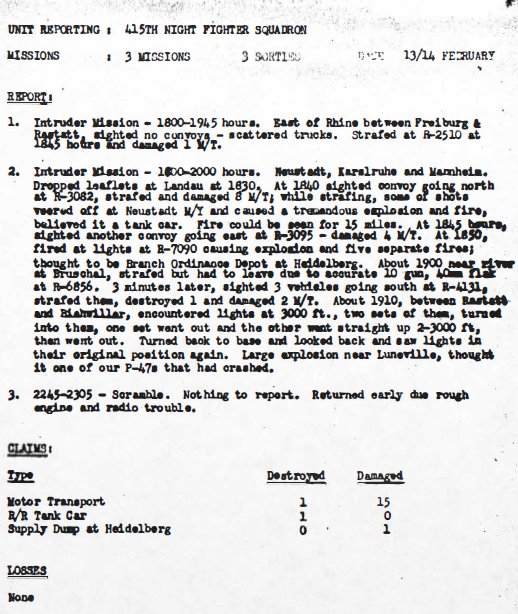
|
UNIT REPORTING: 415TH NIGHT FIGHTER SQUADRON
MISSIONS: 3 MISSIONS 3 SORTIES DATE 13/14 FEBRUARY
REPORT:
1. Intruder Mission - 1800-1945 hours. East of Rhine between Freiburg & Rastatt, sighted no convoys - scattered trucks. Strafed at R-2510 at 1845 hours and damaged 1 M/T.
2. Intruder Mission - 1700-2000 hours. Neustadt, Karlsruhe and Manheim. Dropped leaflets and Landau at 1830. At 1840 sighted convoy going north at R-3082, strafed and damaged 8 M/T; while strafing, some of shots veered off at Neustadt M/Y and caused a tremendous explosion and fire, believed it a tank car. Fire could be seen for 15 miles. At 1845 hours, sighted another convoy going east at R-3095 - damaged 5 M/T. At 1850, fired at lights at R-7090 causing explosion and five separate fires; thought to be Branch Ordnance Depot at Heidelburg. About 1900 near river at Bruschal, strafed but had to leave due to accurate 10 gun, 40mm flak at R-6856. 3 minutes later, sighted 3 vehicles going south at R-4131, strafed them, destroyed 1 and damaged 2 M/T. About 1910, between Rastatt and Bishwiller, encountered lights at 3000 ft., two sets of them, turned into them, one went out and the other went straight up 2-3000 ft, then went out. Turned back to base and looked back and saw lights in their original position again. Large explosion near Luneville, thought it one of our P-47s that crashed.
3. 2245-2305 - Scramble. Nothing to report. Returned early due rough engine and radio trouble.
CLAIMS
Type
Motor Transport
R/R Tank Car
Supply Dump at Heidelburg
LOSSES
None
[Ref. gvo1:] GODELIEVE VAN OVERMEIRE:
1945, February 13
Germany, between Rastalt [sic] and Bishwiller [sic]
Several USAAF combat aircraft pilots (from the 415th NFS) observe two groups of lights at an altitude of 2300 feet. (PROJECT ACUFOE, Catalog 1999, Dominique Weinstein)
[Ref. dwn3:] DOMINIQUE WEINSTEIN:
February 13, 1945 Between Rastatt and Bishviller, Germany
At 1910, several pilots of the 415th Night Fighter Squadron sighted two sets of lights at 3,000 ft. Turned into them, one of the sets went out and the other went straight up to 2-3,000 ft, then went. On their way back to their home base they saw again the lights in their original position.
Sources: Project 1947, Jan Aldrich / USAAF 415th Night Fighter Squadron, Mission Report 13 / 14 February
[Ref. nck1:] NICK COOK:
And another [U.S. Army Air Forces report]:
“February 13-14, 1945 - Mission 2, 1800-2000. About 1910, between Rastatt and Bishwilier [sic], encountered lights at 3,000 feet, two sets of them, turned into them, one set went out and the other went straight up 2-3,000 feet, then went out. Turned back to base and looked back and saw lights in their original position again.”
The reports made it clear that the sightings covered a period between September 1944 and April 1945.
[Ref. lhh1:] LARRY HATCH:
527: 1945/02/13 19:10 2 8:15:00 E 48:51:00 N 3333 WEU GER BDW 4:9
nr RASTATT,GERM:SVRL USAAF PILOTS see 3 GROUPS/NLTS 700M alt:/D.BERLINER++
Ref#150 WEINSTEIN,D; UFO/AIRCRAFT ENCOUNTERS Page No. 2:IN-FLIGHT
[Ref. dwn1:] DOMINIQUE WEINSTEIN:
At 1910, several pilots of the 415th Night Fighter Squadron sighted two sets of lights at 3,000 ft. Turned into them, one of the sets went out and the other went straight up to 2-3,000 ft, then went. On their way back to their home base they saw again the lights in their original position.
Sources: Project 1947, Jan Aldrich / USAAF 415th Night Fighter Squadron, Mission Report 13/14 February 1945
[Ref. dwn2:] DOMINIQUE WEINSTEIN:
At 1910, several pilots of the 415th Night Fighter Squadron sighted two sets of lights at 3,000 ft. The night fighter attacked and turned into them, “one of the sets went out and the other went straight up to 2-3,000 ft, then went out”. Bringing his plane around the pilot was surprised to see the “lights in their original position again.” On their way back to their home base they saw again the lights in their original position.
Sources: Project 1947, Jan Aldrich / USAAF 415th Night Fighter Squadron, Mission Report 13/14 February 1945 / Strange Company, Keith Chester, 2007
[Ref. dbr1:] DON BERLINER:
This author indicates that in 1992, researcher Barry Greenwood of Citizens Against UFO Secrecy went to the National Archives in Suitland, Maryland, and located fifteen “Mission Reports” from the 415th Night Fighter Squadron, covering a period between September 1944 and April 1945. Berliner gave two samples, including:
February 13/14, 1945 - Mission 2, 18:00-20:00. About 19:10, between Rastatt and Bishwiller; encountered lights at 3,000 feet, two sets of them, turned into them, one set went off and the other went straight up 2-3,000 feet (600-900 m.) then went out. Turned back to base and looked back and saw lights in their original position again.
Berliner gives the source reference: Greenwood, Barry, “More Foo-Fighter Records Released,” Just Cause, no. 33. CAUS. September 1992.
[Ref. uda1:] "UFODNA" WEBSITE:
13 February 1945 19:10
Rastatt, Germany
USAAF Pilots - 415th NFS incident.
Two groups of light [Sic] at 2, 300' Unusual objects were sighted, that had unconventional appearance and aerobatic performance. Two lights were observed by several male experienced military witnesses in a warplane.
Hynek rating: NL
Vallee rating: MA1
The sources are indicated as: “Weinstein, Dominique, Aircraft UFO Encounters, Project ACUFOE, Paris, 1999; Hatch, Larry, *U* computer database, Author, Redwood City, 2002”
[Ref. sua1:] "SATURDAY NIGHT UFORIA" WEBSITE:
In such reports it is fascinating to see how much else was going on at the time, as in the following account which includes an encounter with oddly behaving lights...
UNIT REPORTING: 415TH NIGHT FIGHTER SQUADRON
MISSIONS: 3 MISSIONS 3 SORTIES
DATE 13/14 FEBRUARY
REPORT:
1. Intruder Mission - 1800-1945 hours. East of Rhine between Freiburg & Rastatt, sighted no convoys - scattered trucks. Strafed at R-2510 at 1845 hours and damaged 1 M/T.
2. Intruder Mission - 1700-2000 hours. Neustadt, Karlsruhe and Manheim. Dropped leaflets and Landau at 1830. At 1840 sighted convoy going north at R-3082, strafed and damaged 8 M/T; while strafing, some of shots veered off at Neustadt M/Y and caused a tremendous explosion and fire, believed it a tank car. Fire could be seen for 15 miles. At 1845 hours, sighted another convoy going east at R-3095 - damaged 5 M/T. At 1850, fired at lights at R-7090 causing explosion and five separate fires; thought to be Branch Ordnance Depot at Heidelberg. About 1900 near river at Bruschal, strafed but had to leave due to accurate 10 gun, 40mm flak at R-6856. 3 minutes later, sighted 3 vehicles going south at R-4131, strafed them, destroyed 1 and damaged 2 M/T. About 1910, between Rastatt and Bishwiller, encountered lights at 3000 ft., two sets of them, turned into them, one went out and the other went straight up 2-3000 ft, then went out. Turned back to base and looked back and saw lights in their original position again. Large explosion near Luneville, thought it one of our P-47s that crashed.
3. 2245-2305 - Scramble. Nothing to report. Returned early due rough engine and radio trouble.
It is perhaps pertinent to note that although the second and third sorties occurred three hours apart, the report of 'rough engine and radio trouble' forcing a return to base seems to mirror the experience of the four pilots who reported trouble with their radio and engines on October 12, 1944 near Strasbourg.
(Ref. nip1:) "THE NICAP WEBSITE":
Feb. 13/14, 1945; Bt. Rastatt and Bishwiller, Germany
Two sets of lights; separated after being attacked and then returned to original position. (Page 136 Ref.1)
The reference 1 is described at the end of the document as “Strange Company (2007), Keith Chester”.
[Ref. tai1:] "THINK ABOUT IT" WEBSITE:
Date: Feb. 13/14, 1945
Location: Between Rastatt and Bischwiller, Germany
Time:
Summary: Two sets of lights; separated after being attacked and then returned to original position.
Source:
The Bristol Type 156 “Beaufighter”, nicknamed “Beau”, was a British multi-role aircraft developed during WWII. It was originally conceived as a heavy fighter variant of the Bristol Beaufort torpedo bomber; it proved to be an effective night fighter, which came into service with the Royal Air Force (RAF) during the Battle of Britain.
Originally, armament consisted of four 20mm cannons and six 0.303-in machine-guns but many variants were built; for example, versions had the ability to additionally carry eight rocket projectiles, some had a Vickers 'K' gun, Beaufighter TF.Mk X was used for anti-shipping operations.
The Beaufighter Mk VIF was fitted with the Mark VIII radar.
Below: Beaufighter Mk VIF of the 415th Night Fighter Squadron.
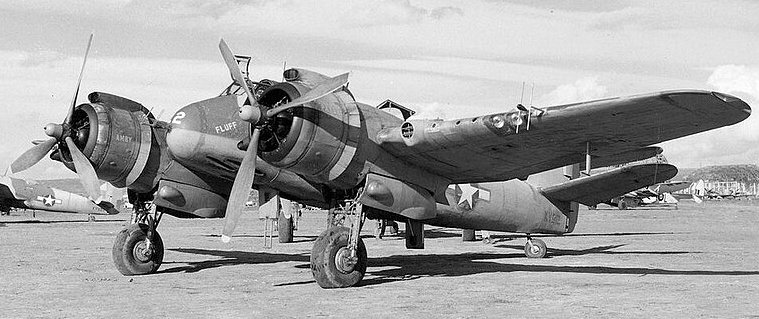
|
The Beaufighters served with the U.S. Army Air Forces until the end of the war, but most were replaced by the P-61 “Black Widow” beginning on March 20, 1945.
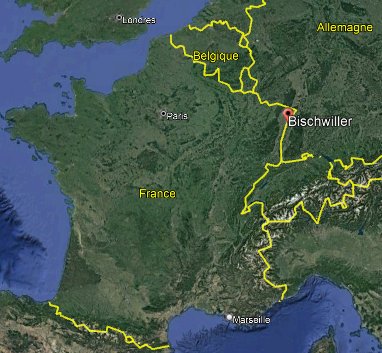
|
I must first point out that many other French-speaking and English-speaking websites copy the extract from the US Air Force mission report found by Barry Greenwood, citing or not citing the sources. Some copy my article about the “Foo Fighters”, with or without source and most often with an incorrect link to my article. The worst is a French webmaster who copied my entire article, which was itself copied again onto a UFO forum, and he complained about that!
There is obviously little interest that I cite all these copycats.
The location is obviously imprecise: Bischwiller (not “Bishwiller” is in Alsace in France, not in Germany, but Rastatt is in Germany. If the place was truly midway on a straight line between the two village, it was in Alsace, but nothing is less sure:
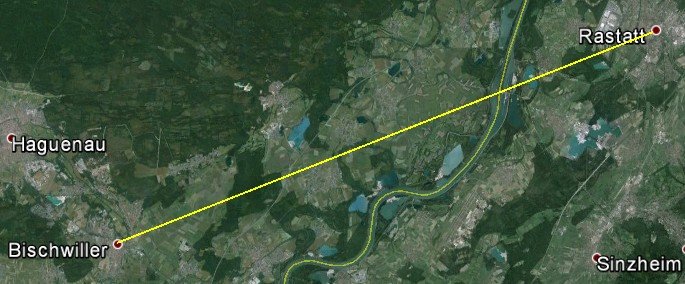
|
For general information about the “Foo-Fighters” of the Rhine valley in 1944-1945, refer to my discussion on this other case.
There is also information about the potential of confusions of airplanes in the discussion of this other case.
The 415th NFS received their first P-61 “Black Widow” on March 20, 1945. For this observation, the plane is this still a British-built Bristol Beaufighter in its night fighter version.
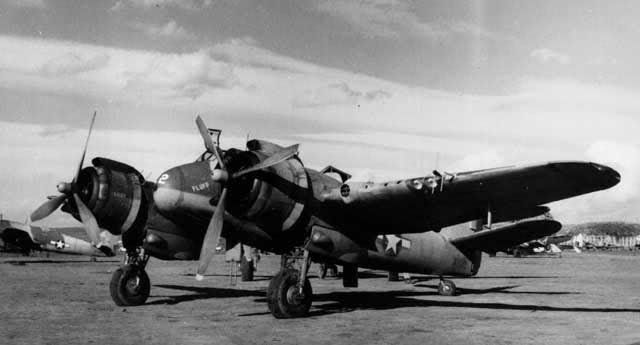
|
|
A Bristol Beaufighter of the 415th NFS. |
It would be quite tempting to think that the “Foo-Fighters” reported here would be Messerschmitt Me-262 jet night fighters, but historically they can be eliminated. The only unit to dispose of it is the “Kommando Welter” attached to the NJG 11, it then operates against the attacks of “Mosquito” in the sector of Berlin and is based in Rechlin-Lärz in the north of Germany then in Burg near Magdeburg - on the route of the “Mosquito” attacking Berlin - and above all, only the leader of the Kommando, Oberleutnant Kurt Welter, has flown night flights then - with 5 victories to his credit. Only his own Me-262 is equipped with UV lamps to read maps and other adaptations; the plan is his five pilots will start their training for night flights, it is expected that they fight in the days that followed.
(See: “Me 262 - Entwicklung, Erprobung und Fertigung des ersten einsatzfähigen Düsenjägers der Welt”, by Willy Radinger and Walter Schick, Aviatic Verlag, Oberhaching, Germany, page 75, 1992.)

|
Unidentified.
* = Source is available to me.
? = Source I am told about but could not get so far. Help needed.
| Main author: | Patrick Gross |
|---|---|
| Contributors: | None |
| Reviewers: | None |
| Editor: | Patrick Gross |
| Version: | Create/changed by: | Date: | Description: |
|---|---|---|---|
| 0.1 | Patrick Gross | February 6, 2018 | Creation, [aaf1], [bgd1], [dbr1], [dwn1], [dwn2], [lhh1], [nip1], [uda1], [cvn2], [rpl1], [tai1]. |
| 1.0 | Patrick Gross | February 6, 2018 | First published in ALSACAT. |
| 1.1 | Patrick Gross | June 3, 2024 | Additions [gvo1], [nck1], [dwn2], [dwn3]. |
| 1.1 | Patrick Gross | June 3, 2024 | First published. |